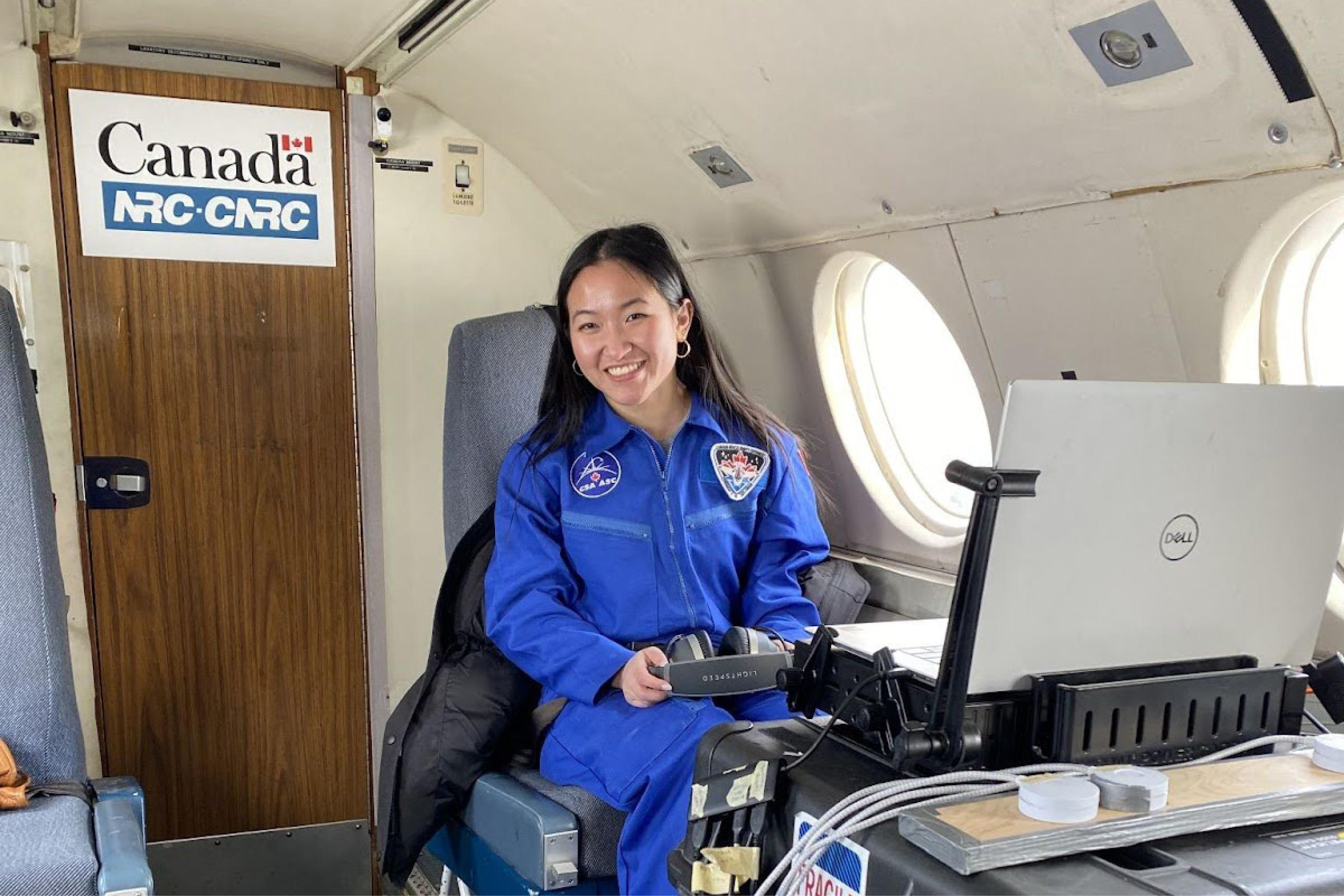What does microgravity feel like, and how does it work?
"It was truly the highlight of my life to float around and feel weightless," says Jennifer. Imagine experiencing weightlessness, similar to what astronauts feel in space. This can be achieved by flying an aircraft along a curved or parabolic path, which mimics the feeling of microgravity when going over the top of that curve. This effect replicates what occurs on the International Space Station, where experiments take advantage of the weightless environment to do experiments, such as 3-D printing organs and understanding how plants grow without gravitational pull. "As the aircraft enters a state of free-fall, everything floats freely as if they were in space," mentions Jennifer.
She was a mission specialist for Mission SpaceWalker, a team that flew their robotics experiment as part of the Canadian Reduced Gravity Experiment held by Students for the Exploration and Development of Space (SEDS) on the National Research Council's Falcon 20 aircraft.

Video of Jennifer floating in microgravity
So what does a parabolic flight simulating microgravity feel like, and how can you float in 0G, too?
The pullup
Once the Falcon 20 has taken off from the runway and is high enough above ground to begin a parabola (a curved trajectory similar to an upside-down U), the 2G pullup occurs. During this period of time, the plane is angled upwards toward the sky, and you experience pressure along your body, which was described by SEDS staff as "the world giving you a hug." Think of how it feels holding your arm up and how gravity wants to pull it back down. Now imagine double that pull, which would be what 2G feels like.
"The 2G pullup is similar to the excitement building all the way up to the campaign," explains Jennifer. Her team members worked outside of school leading up to the campaign, which included evenings spent building the robot components and fixing holes in the frame. "It was a lot of early mornings and late nights, but the team was amazing, and I always looked forward to our work sessions," says Jennifer.
The team made use of the U of A's Elko Engineering Garage, which offers training on various machinery, from 3-D printers to vinyl cutters, for all U of A students, regardless of their degree. Members were often found preparing their robots for flight in the Mechanical Engineering Workshop or making their experiment's electroadhesive pads in Dr. Sameoto's lab space. All the work that went into making the experiment was an exciting push to the campaign, much like the 2G is the pressure before the float!
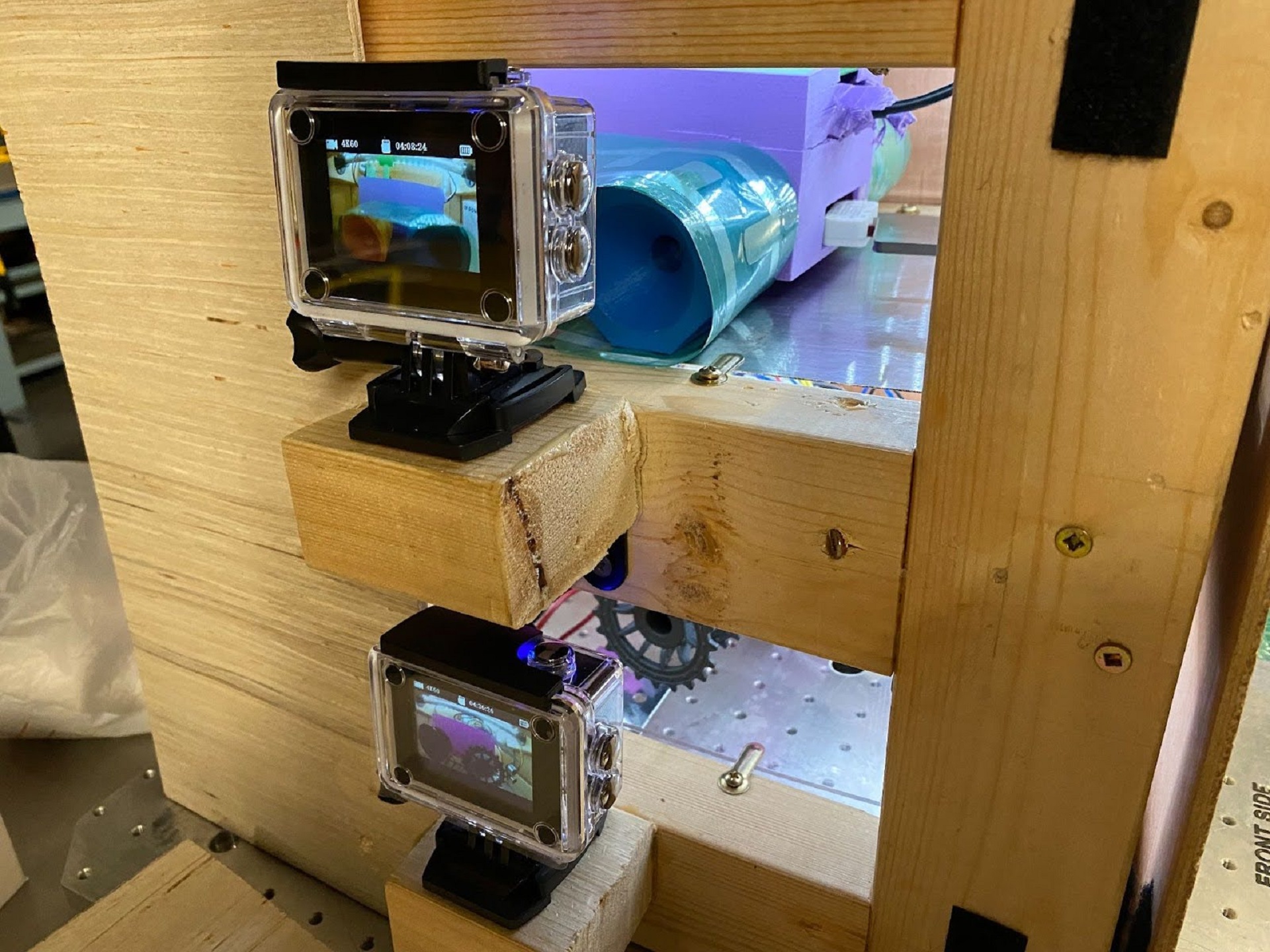
The electroadhesive robotics experiment
The float
"Microgravity was the most incredible thing I've ever experienced; it is an incredible feeling," remarks Jennifer. Upon reaching the top of the parabola's curve, a pilot signals a push call on the communications system, and everything begins to float. Your hair starts to fly in various directions, and your body starts to rise from your seat. For 20-30 seconds, you feel like you're flying and hear the laughing joy of your other crewmates.
Despite the thrill of 0G, Jennifer also focused on the meaningful research she and her team spent months preparing. "Studying microgravity is essential for space exploration and scientific research, and I am so thankful I was given the opportunity to contribute," says Jennifer. During those crucial times in microgravity, she was closely monitoring the health of the cameras capturing the robot's activity in the pelican case. The robotics experiment was in this black latched case to ensure everything was contained during the float. She also had to ensure that the code reading the sensor data was working properly and was saved after each parabola. Parabolic flights help demonstrate the behaviour of these robots in the absence of gravity and can help broaden the understanding of gravitational impacts here on Earth.
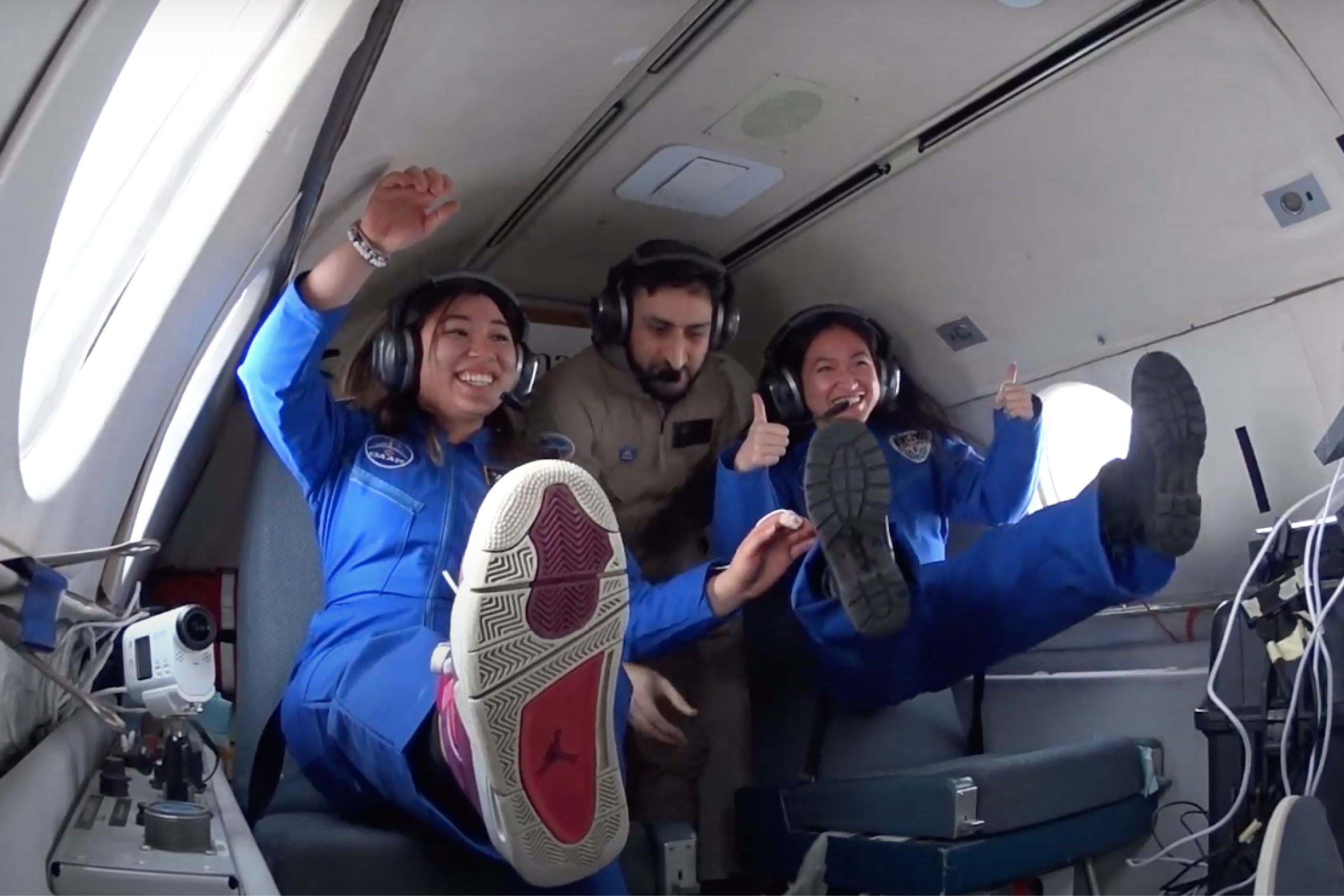
Mission Spacewalker Mission Specialists and Shahrukh (middle) from the NRC in microgravity
"I was lucky enough not to get sick!" exclaims Jennifer. Parabolic flight aircraft are often referred to as a "vomit comet" due to the amount of motion sickness people experience. For some people, their inner ear becomes confused, and they feel like they are upside down. For others, it is worse than car motion sickness. Jennifer herself often feels motion sickness in vehicles, but it appears she was made for microgravity. It is often advised in the 2G portion to keep your head and gaze steady to not disrupt your inner ear further. However, Jennifer was shaking her head with laughter to test this theory and still didn't experience any sickness. "I spent a few minutes doing yoga and meditating before the flight to calm my nerves and get into the right headspace," says Jennifer. Each person experiences microgravity differently, which is what makes floating in microgravity even more interesting!
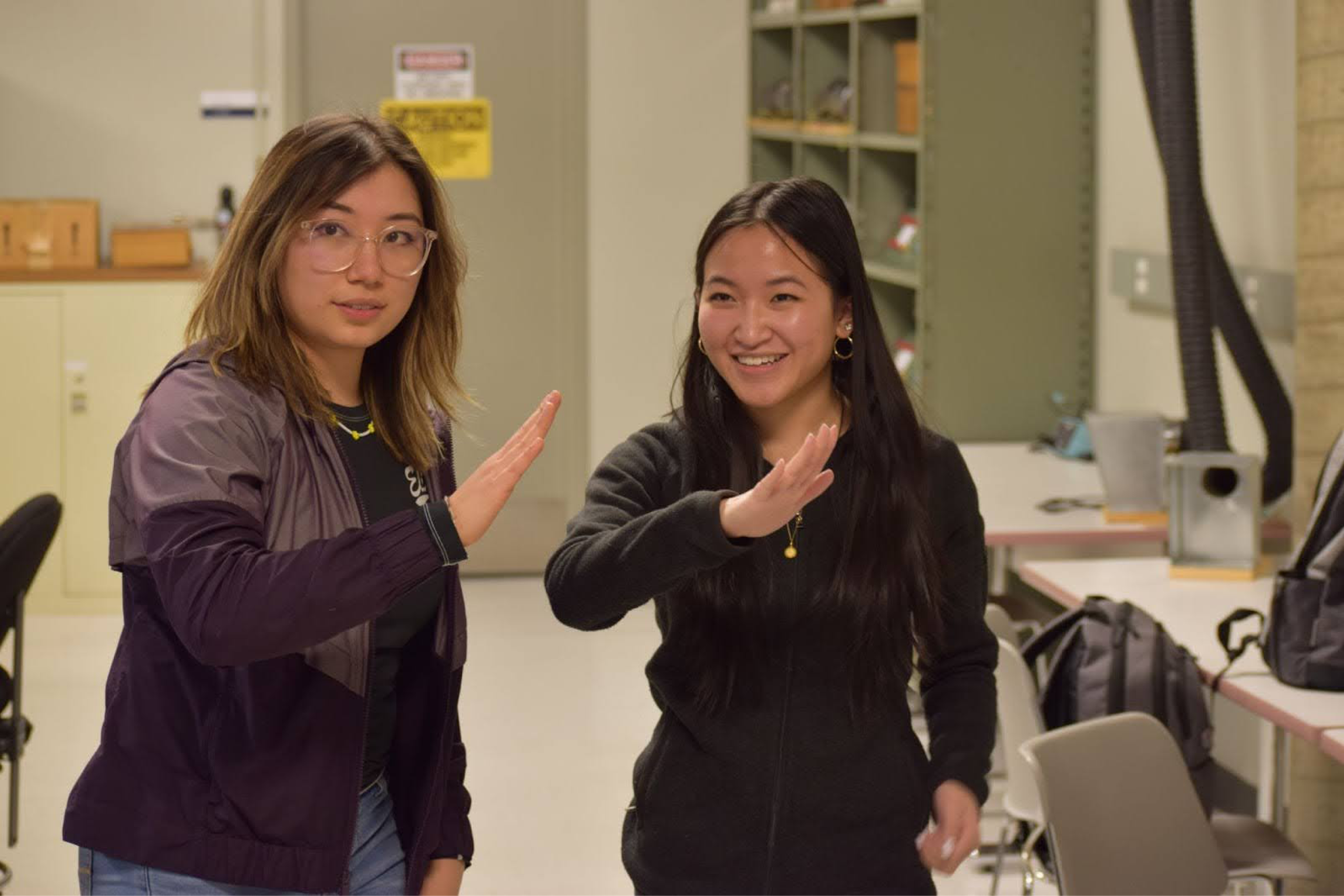
Mission Specialists Makenna and Jennifer during the campaign
The pulldown
"The pulldown was calming, similar to right after the flight," Jennifer remarks. After the Falcon 20 aircraft freefalls and simulates microgravity, a 2G recovery period occurs. The pilots then pull the nose of the aircraft back up towards the sky, completing the parabolic curve.&
"The adrenaline decreased, and I had a chance to catch my breath after floating around," says Jennifer. After the year-long excitement of preparing for the campaign, it was similar to the feeling after the first float. There is a sense of relief and celebration at doing something you have been working so hard for and finally reaching that goal. You feel proud of your work and are motivated to continue!
After completing the first parabola, the pilots can then pull the nose up and repeat the process or exit the parabola into level flight.
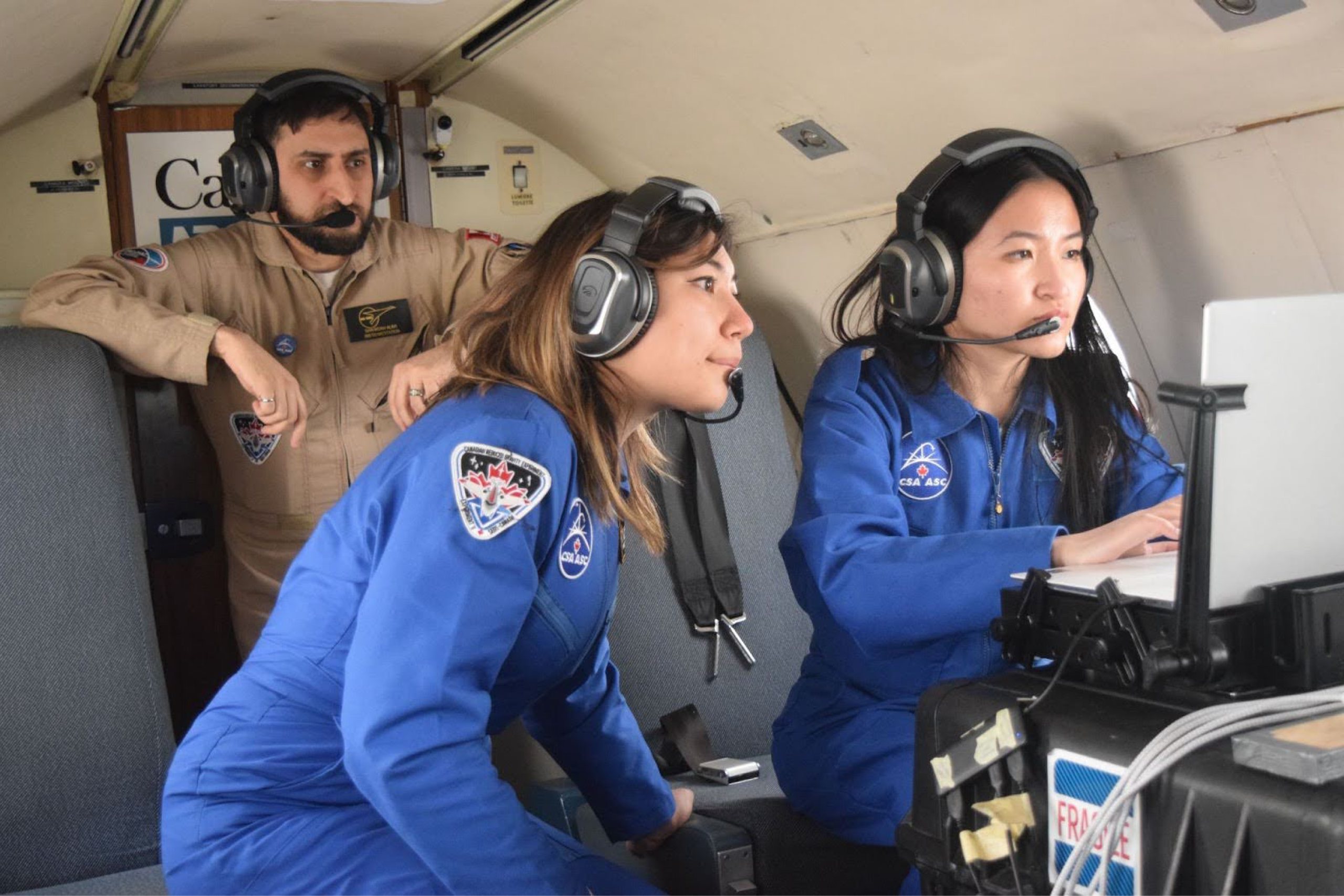
Jennifer verifying the data in level flight (left)
The level flight
"We used level flight to get ready for the following parabolas, making sure everything was set up as we wanted and that we were collecting data properly," says Jennifer. At this time, the pilot steadies the flight back to a 1G environment where crew members can walk around and adjust their experiments. For Mission SpaceWalker, this time was used to ensure the robots were held in the pelican case as expected and the sensor readings and videos from the cameras were properly stored. Since their experiment was contained in the pelican case, this also gave an opportunity to open the case and adjust any components that might have been an issue. Something like a piece of dust may not affect the experiment on the ground, but in microgravity, it can float around the view of your camera!
Jennifer states that level flight was "also an opportunity for us to regroup and catch our breath. Similarly, after the campaign, we used the time to validate our data." Much like the following weeks after the campaign, the 1G environment of the level flight is what your body is used to. You return to your normal environment or everyday classes and have time to reflect on the amazing feeling of floating in 0G. Level flight is like a sigh of happiness as you reflect on your time in microgravity and the campaign as a whole.
Onto the next parabola
After level flight, the pilots can then resume the parabolic flight trajectory and complete further parabolas. On the two flights Jennifer was a part of, she completed a total of 20 parabolas, where she spent over 8 minutes in microgravity. Just like the pilot pulling up for another parabola, she continued to help with the team after the campaign, and Mission SpaceWalker is continuing on to push the limits of research and participate in space-like experiences.

Jennifer, Jana, and Makenna presenting at the Canadian Space Conference in Montreal.
Jennifer is completing her final year of mechanical engineering and she is looking forward to where the skills developed through her undergraduate degree will take her.
How you can float in 0G, too
Any undergraduate team can apply to the Canadian Reduced Gravity Experiment challenge, and proposals are reviewed and selected annually. "SEDS hosts many competitions other than CAN-RGX, like CAN-SBX and CAN-ARX! You can see all of their competitions and apply via their website!" says Jennifer. Mission SpaceWalker has successfully applied to CAN-ARX (the Canadian analog research experiment) and is also supporting AtmoTech, currently developing a solar array experiment for the Canadian Stratospheric Balloon Experiment. The National Research Council (NRC) enables researchers to fly on a parabolic flight, and there are various ways to get involved.
Whether that is through SEDS, from a master's degree involving microgravity, or as an intern at the NRC, you could float in the sky, too!
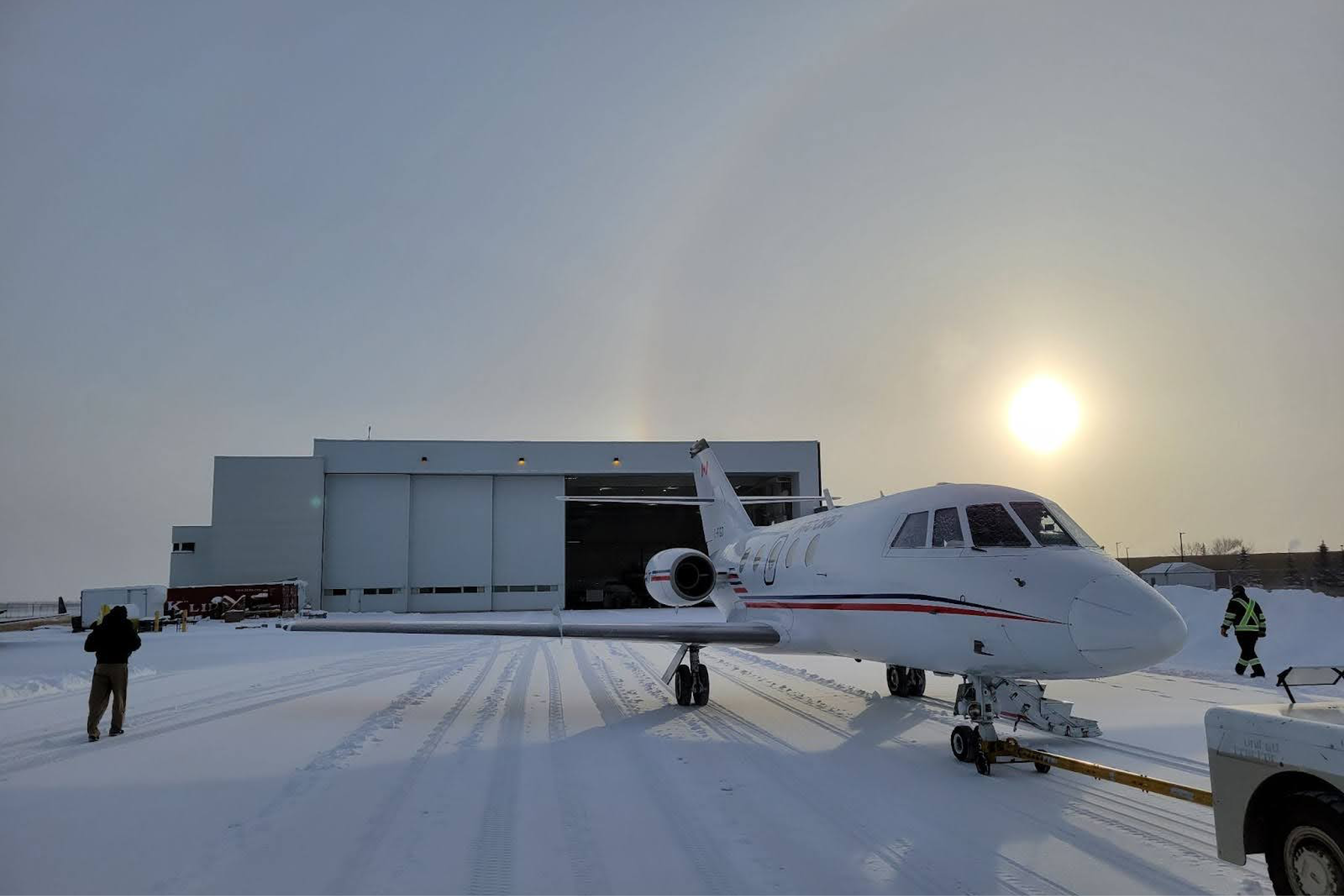
The NRC Falcon 20 Aircraft
"This was an incredible opportunity, and I'm so thankful for SEDS, the Canadian Space Agency and the NRC for their continued support throughout the experiment development and during the campaign," says Jennifer in her final remarks.
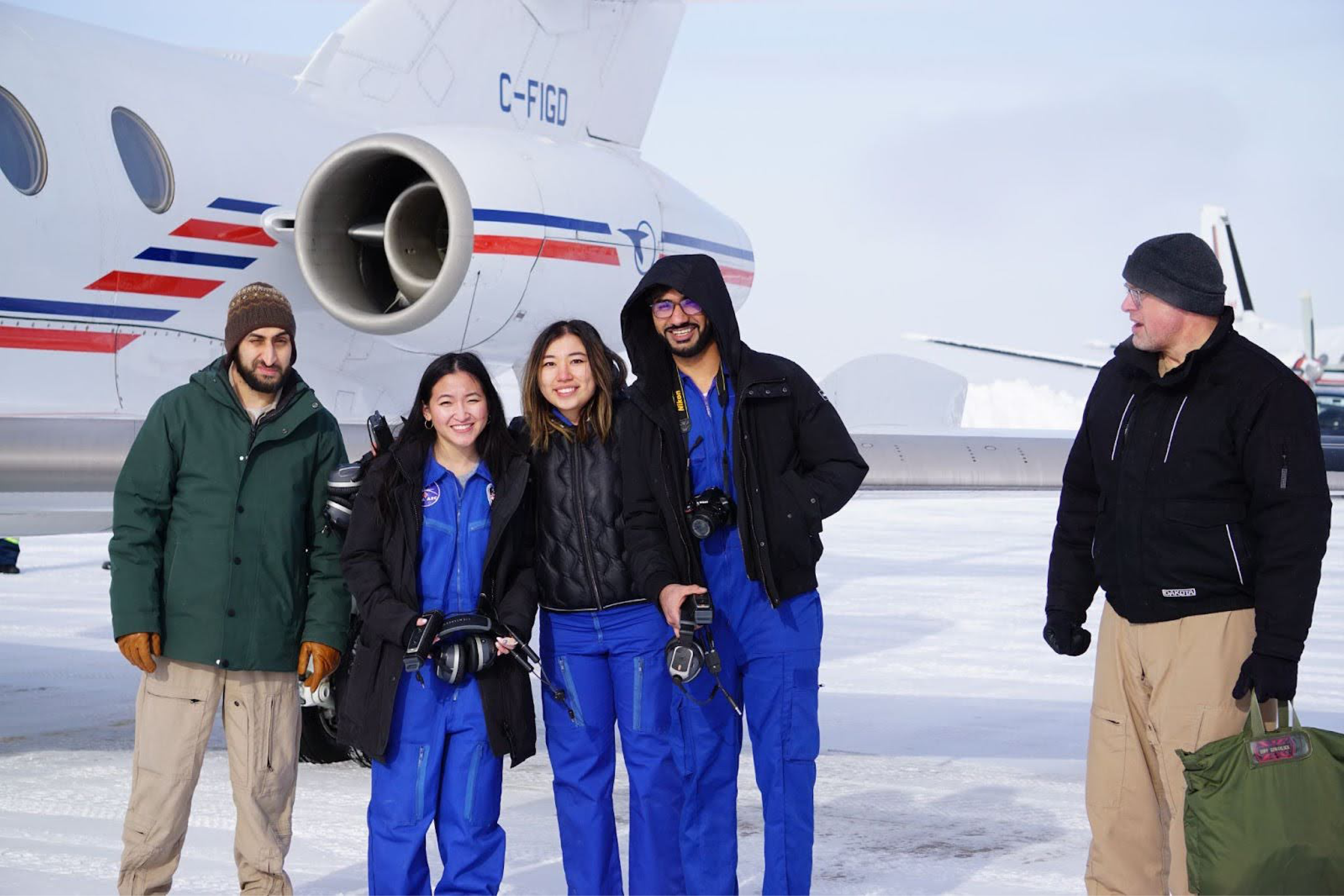
The crew of the first flight (from right to left): Shahrukh, Jennifer, Makenna, Pundeep, Derek
Jennifer's Social Media
Instagram: @jennifer.yip
LinkedIn: https://www.linkedin.com/in/jennifer-yip-b787571ba/